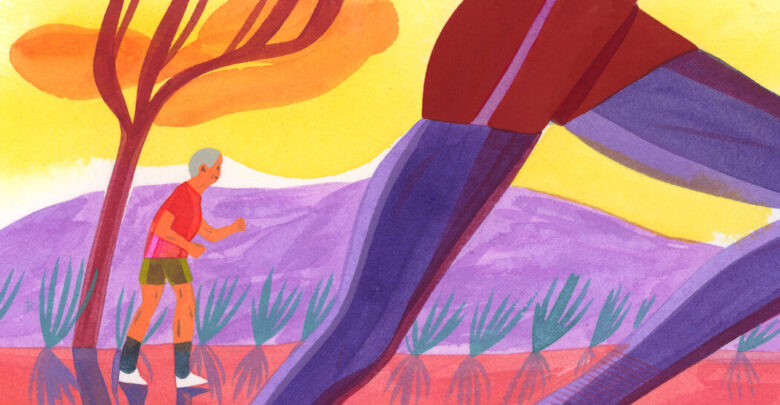How my desire to run again drove me to walk

I run because during this brief break in a hectic world of responsibility and worry, running turns off my thinking brain and allows it to float freely in the moment. When I run alone, as I usually do (or have done and hope to do again), I prefer to run the same route because I am familiar with any tree root, metal mesh, or stretch of trail prone to mud or puddles, so I don't have to remember to be careful. At what pace? No idea and it doesn't matter.
In this state of mind, I soak up the world I forget too often – be it the beauty of the Capitol and the majesty of the Hudson River, or the smaller things, like the clink of the cheesy carousel in front of the Smithsonian. And problems seem to be solved out of the blue. The perfect phrase to start an article I'm struggling with. A birthday present for a friend who has it all. How to Resolve a Sibling Conflict. After the three to four miles I feel physically tired but emotionally energized – excited about plans that are now waiting to be activated.
The need to regain that emotional support through running motivated me through months of arduous physical therapy and rehab.
Physical rehab after a head injury is the opposite of the mental freedom of running. You need to think every time you put your foot up to walk and consciously develop strategies on how to avoid a small root or stone on a sidewalk. Turn your head to watch the landscape and it will throw you off balance.
You focus on each muscle group so that they learn to move properly again. It takes tens of thousands of repetitions to teach your brain a simple movement, and there are hundreds of muscles that need to relearn their proper roles. Even a walk on the beach is not liberating – it requires hard work and concentration: hit the heel first, then roll on the ball of the foot. Pay attention to the hip muscles and be prepared for the slope of the sand and the tiny bump of an incoming wavelet.
The good news is that the brain is miraculously pliable and is often able to rewire its damaged circuitry through intense exercise – a skill known as "neuroplasticity". The bad news is that it is slow to learn, the nerves grow at 1 millimeter per day, and it takes the brain time to figure out solutions to these irreparably damaged circuits. So healing can take years. My progress is slow but noticeable and I have no way of knowing when or if it will stop.
Today I can walk at normal speed with caution (if a little awkward). I can swim, drive and cook dinner. I can climb stairs without clutching the railing. Most patients my age could be satisfied. Not me. Being able to walk again is my Mt. Everest. (And to all of the doctors who stopped my running, studies over the past decade have shown that running can actually be beneficial for the knees and maybe even prevent degenerative arthritis.)



